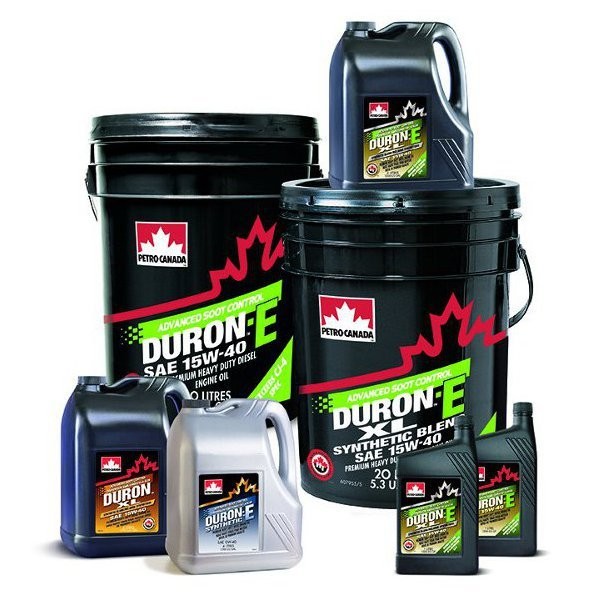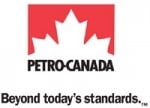
In fleet management, even the slightest rise in the cost of fuel has the potential to lower profits. With that in mind, original equipment manufacturers have pursued new ways to improve fuel economy, for example by building smaller, lighter engines. Operations are paying critical attention to loads, tire pressures and driver training.
Yet one of the least considered threats to fuel efficiency remains something as old as the diesel engine itself. That problem is soot. Even in today’s most advanced engines, which run on ultra-low sulphur fuel, soot can have a significant impact on engine performance. In fact, as engine loads get heavier and drain intervals are extended further and further, the relevance of soot has never been greater.
“Our research has shown that soot is just as prevalent now as it was years ago,” explains Jane Li, Commercial & Industrial Engines Category Portfolio Manager at Petro-Canada Lubricants. “Today’s tough operating conditions can produce and retain more soot than ever before and soot can affect costs across the board.”
“Trucks in the waste and recycling industry typically run at lower miles per hour and make more frequent stops versus trucks operating in steady state open highway conditions,” says Brian Humphrey, OEM Technical Liaison-Heavy Duty Driveline, Petro-Canada Lubricants.
“Due to this stop and start motion, extra soot is transferred into the oil more quickly. Thus the oil needs to be able to handle and mitigate the negative effects of higher soot for those vehicles in this service.”
How soot saps performance
Because of the impurities in diesel fuel and inefficiencies in the combustion cycle, soot and other by-products are produced. While most soot generated exits through an engine’s exhaust system, or is trapped in a diesel particulate filter, a percentage is absorbed by an engine’s lubricant.
“When left uncontrolled, soot particles in engine oil tend to agglomerate, forming clumps as rock-hard as diamonds that can scratch and score the inside of your engine,” explains John Pettingill, DURON Products Specialist, Petro-Canada Lubricants. “These dangerous soot agglomerates can significantly affect an engine’s condition, efficiency and power output.”
Pistons that are scored because of soot clumps in the lubricant can leak fuel and air during the compression cycle, reducing an engine’s horsepower. Fuel efficiency can also be undermined when valve train components experience similar damage and wear.
The plot thickens
Without the proper soot-fighting formulation, soot can build up over time and actually thicken engine oil.
When engine oil thickens it causes viscous drag, which increases the energy needed to circulate the oil and hinders the lubricant from effectively reaching and protecting critical components of the engine. Without proper protection, an engine can experience increased wear,become less efficient and experience decreased fuel economy as a result.
“The goal with viscosity and maintaining good fuel economy is to achieve the right High-Temperature High-Shear (HTHS) viscosity,” says Pettingill. “By controlling soot and achieving the correct HTHS level, you can improve your engine efficiency, keep your fresh oil properties longer and better maintain fuel economy over the life of the oil.”
Soot strategy
When you start with a lower viscosity oil there is less impact on performance when oil experiences thickening for any reason – soot, temperature range, etc. And it only makes sense that these thinner oils can naturally flow better, with less energy needed to circulate them through the engine, which can improve the overall engine efficiency. For this reason, there is a growing trend in the fleet management industry to switch to thinner, lower viscosity fluids to help improve fuel economy.
Though as Li explains, there is some hesitation around the effectiveness of these fluids.
“We’ve heard fears from many fleet managers about the quality of protection in lower viscosity oils,” says Li. “But with an engine oil like DURON-E 10W-30, fleet managers can benefit from using a lower viscosity oil for better fuel economy, and still effectively protect the critical components of their engines.”
In on-road field trials, Petro-Canada says they have demonstrated both that DURON-E 10W-30 provides similar protection to DURON-E 15W-40, and that DURON’s advanced soot control helps ensure low wear on critical engine components, extend engine life and increase potential for greater fuel economy.
So, what can fleet managers do to minimize the effects of engine soot and maximize fuel economy?
According to Jane Li, “There are two principal points to consider when selecting a heavy-duty engine oil; how pure is the oil and how effective is the dispersant?”
Li says Petro-Canada’s DURON-E is formulated with 99.9 percent pure base oils and blended with proprietary additives to micro-disperse soot particles and prevent clumping. By managing soot with a high quality engine oil like DURON-E, fleet managers can effectively maintain fuel economy and improve engine life.
Company info
2310 Lakeshore Road West
Mississauga, ON
CA, L5J 1K2
Website:
www.lubricants.petro-canada.ca



